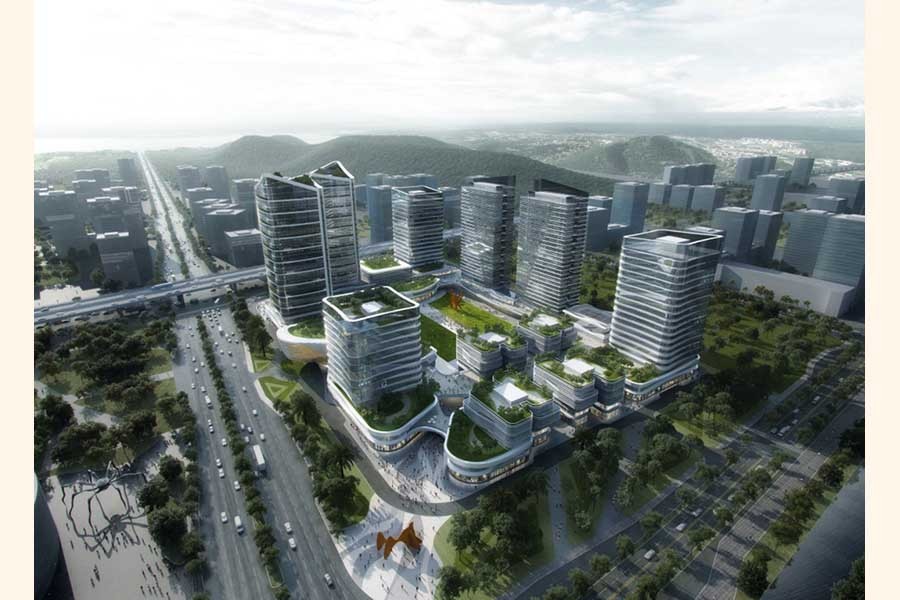Setting up a high-tech park in every district of the country is not an outlandish proposal. Bangladesh is in an economic stage of development where it can afford the luxury of taking up a more ambitious programme. The country has already created union digital centres all across the country. So when the prime minister of the country envisions each district with a high-tech park, it does not sound unachievable. High-tech here refers to information and communication technology (ICT) -- one that has initiated the fourth industrial revolution. The problem is not so much with establishment of such technology-driven park as it is with giving those a full-fledged shape. If the union digital centres are any guide, it is more of an exercise of putting the cart before the horse than the other way round. In the absence of a proper condition for operation of such facilities, such centres have failed to meet the objectives for which they were created.
High-tech parks mean highly sophisticated concentration of technological facilities, equipment and tech-savvy professionals. True, Bangladesh has been producing IT professionals in an increasing number but still the front-runners among them are just a handful. The great majority of them are mediocre who may at best excel in outsourcing but when it comes to innovation and creativity, not many vie for the laurel. A high-tech park demands not just infrastructure at a given place but also connectivity with the outside world. With the introduction of the second submarine cable, internet speed has improved but it is still far below the desired level. Then there is the question of power supply. In cities it has improved but at district levels and in villages, power plays a prank. For hours or even days together, villages remain without power.
Internet services are accessible to people but most people's knowledge level falls far short of its use, maintaining full privacy --a fact that is most necessary for digitisation. Even internet connection at the subscribers' level is still pricier and unless this is brought down further, it will not become a widely used technology like the cell phone. Internet bandwidth price has to be reduced further if the purpose is to give its benefit to the wider public. The level of education among the people acts as a deterrent to internet use, so there is a need to direct greater focus on education, particularly at the bottom half of society.
By all means, the country's population structures offer an advantage for digitisation to happen. If 65 per cent of the population is under 35 years of age, the opportunity is surely there for the nation to grab. But this needs a comprehensive plan. Before the high-tech park there is a need for preparing the population for reaping the benefits of the fourth industrial revolution. Let the education be streamlined to meet the challenges of the ICT. In a populous country like Bangladesh, the hullaballoo over artificial intelligence is rather misplaced. Sure enough, there are other areas of this technology, where development can bring rich dividends for the country. Rather than becoming educated unemployed, the young generation needs a high level of technological knowledge and expertise to compete with their counterparts anywhere in the world. Evidence shows they are quite capable of doing this.


